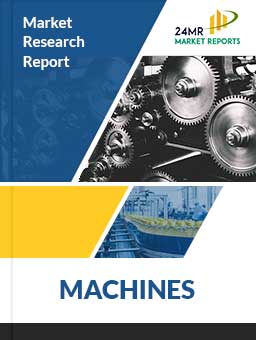
Download FREE Report Sample
Download Free sampleCarbon Fiber Reinforced Polymer Composites (CFRP) are lightweight, strong materials used in the manufacturing of numerous products used in our daily life. In general, CFRP composites use thermosetting resins such as epoxy, polyester, or vinyl ester.
Pressure vessel composite materials are used in manufacturing pressure vessels that are used to store gases and liquids under high pressure. The strength of the vessel is the critical parameter to prevent explosions as a result of the rupture. A composite material is a combination of materials differing in composition or form on a macro scale. These materials do not dissolve or otherwise merge completely into each other. Composite materials help to improve the performance and also offers a significant amount of material savings.
Since 1970 pressure vessel manufacturers have been using continuous fibers filaments, also known as tows or roving, to improve the physical properties of pressure vessels. Starting with what the industry calls a type II vessel; high strength fibers, such as glass fiber, were wrapped around the cylindrical sections of steel and aluminum pressure vessels to add reinforcement allowing a roughly 30% reduction in overall vessel mass.
As the fiber reinforcement became more and more significant in pressure vessel design, fiber manufacturers began refining their offerings and experimenting with new fiber types like carbon fiber, which is currently the most popular reinforcement in composite pressure vessels, because of its incredible stiffness and tensile strength. In addition to carbon and glass, new fibers were created such as Kevlar a type of aramid fiber and basalt fiber. These new fibers offered contrasting mechanical properties such as impact resistance, and low temperature resistance to the pressure vessel designers arsenal.
As new composite pressure vessel applications emerged, the need for unique mechanical properties and increasing economic pressures create a need for hybrid vessels which could either use distinct and separate layers of fiber for different roles such as impact/ abrasion resistance, or different fibers in the same band to get the properties of both fibers throughout the laminate.
The evolution of vessels and tanks designed to hold liquids and gases under pressure has proceeded through four distinct stages: all-metal tanks (Type I), metal hoop-wrapped composite tanks (Type II), metal-lined composite tanks (Type III) and plastic-lined composite tanks (Type IV). The fifth stage, an all-composite, linerless Type V tank has been the pressure vessel industrys Holy Grail for years.
Carbon Fiber Pressure Vessel Market aims to provide a comprehensive presentation of the global market for Carbon Fiber Pressure Vessel, with both quantitative and qualitative analysis, to help readers develop business/growth strategies, assess the market competitive situation, analyze their position in the current marketplace, and make informed business decisions regarding Carbon Fiber Pressure Vessel. Carbon Fiber Pressure Vessel Market contains market size and forecasts of Carbon Fiber Pressure Vessel in global, including the following market information:
Global Carbon Fiber Pressure Vessel Market Revenue, 2018-2023, 2024-2029, ($ millions)
Global Carbon Fiber Pressure Vessel Market Sales, 2018-2023, 2024-2029, (Unit)
Global top five Carbon Fiber Pressure Vessel companies in 2022 (%)
The global Carbon Fiber Pressure Vessel market was valued at US$ 583.2 million in 2022 and is projected to reach US$ 953.4 million by 2029, at a CAGR of 7.3% during the forecast period. The influence of COVID-19 and the Russia-Ukraine War were considered while estimating market sizes.
Global core carbon fiber pressure vessel manufacturers include Luxfer Group, Iljin Composites Corp, Faber Industrie SpA etc. North America is the largest market, occupied for about 30 percent, followed by South Korea, which holds around 21% market share, and China holds a share about 20%. In terms of type, type III carbon fiber pressure vessel segment occupied main global market, holds share over 70 percent. In terms of application, SCBA/SCUBA segment holds share about 26 percent close to 28% for CNG storage tank.
We surveyed the Carbon Fiber Pressure Vessel manufacturers, suppliers, distributors and industry experts on this industry, involving the sales, revenue, demand, price change, product type, recent development and plan, industry trends, drivers, challenges, obstacles, and potential risks.
Total Market by Segment:
Global Carbon Fiber Pressure Vessel Market, by Type, 2018-2023, 2024-2029 ($ Millions) & (Unit)
Global Carbon Fiber Pressure Vessel Market Segment Percentages, by Type, 2022 (%)

Speak to our Custom Research Team and get the Custom Research in a budget
Custom ResearchFrequently Asked Questions ?
A license granted to one user. Rules or conditions might be applied for e.g. the use of electric files (PDFs) or printings, depending on product.
A license granted to multiple users.
A license granted to a single business site/establishment.
A license granted to all employees within organisation access to the product.
Upto Working 24 to 48 hrs
Upto 72 hrs max - Weekends and Public Holidays
Online Payments with PayPal and CCavenue
Wire Transfer/Bank Transfer
Hard Copy




 Industry Market Size
Industry Market Size SWOT Analysis
SWOT Analysis Industry Major Players
Industry Major Players Revenue Forecasts
Revenue Forecasts Historical and Forecast Growth
Historical and Forecast Growth Profitability Analysis
Profitability Analysis
























